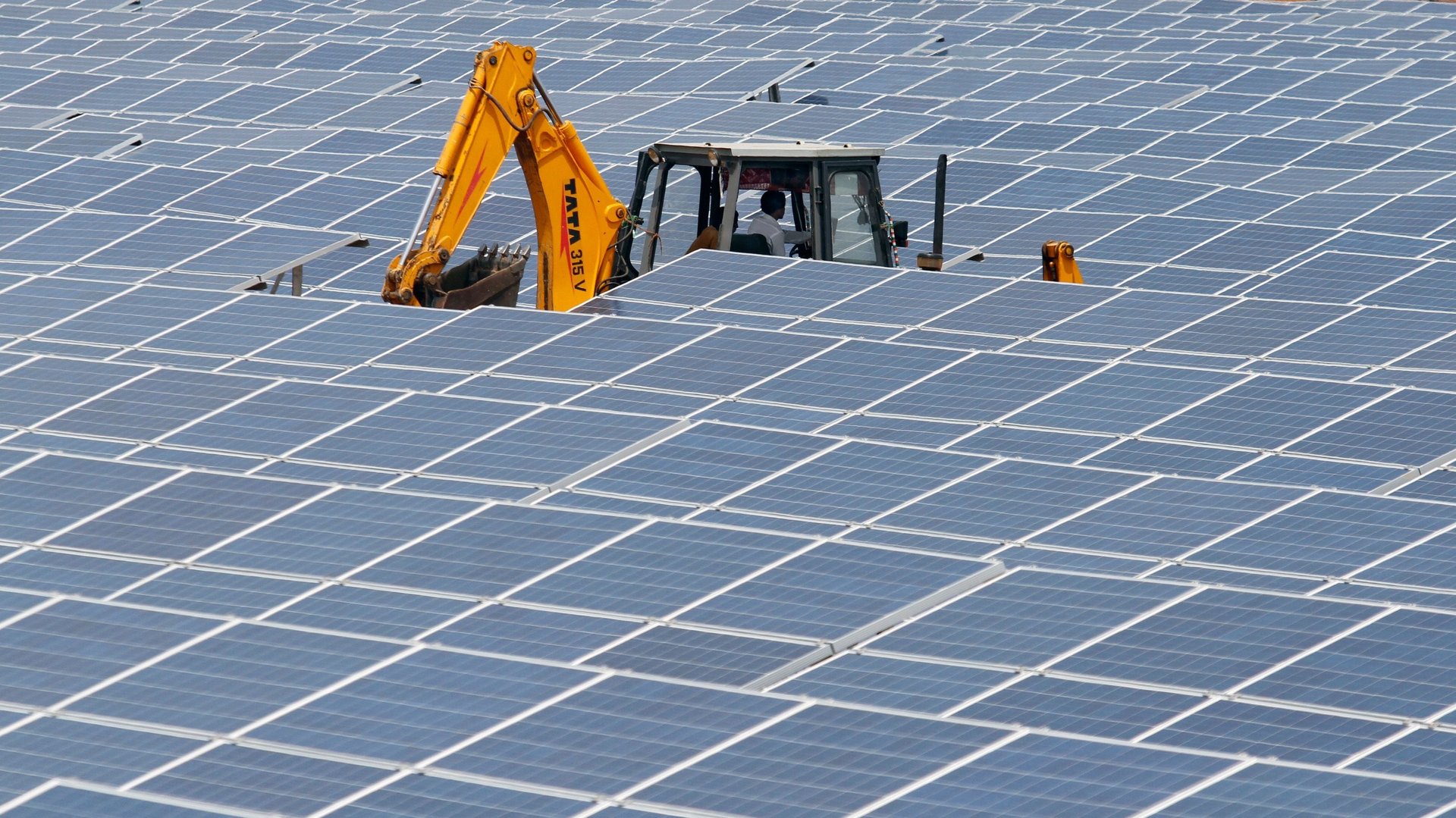Policy hurdles are puncturing India’s solar boom
India’s solar power goals are currently groping in the dark.


India’s solar power goals are currently groping in the dark.
In the second quarter of 2018, the number of new solar installations in the country fell 52% compared to the first.
According to research and consulting firm Mercom India, 1,599 megawatts (MW) of fresh solar power capacity was installed between April and June 2018, down from 3,344 MW in the previous quarter. This is their lowest quarterly level since 2017.
Mercom said the decline was expected due to “uncertainties around trade cases, module price fluctuations, and power purchase agreement renegotiations after record low bids that contributed to the tender and auction slowdown in 2017.”
Large-scale solar power projects that account for most of the installations fell almost 60% from the first quarter. However, rooftop installations grew 6%.
“The drop in 2018 solar power installations is mostly in large-scale projects due to the lack of a strong project pipeline,” Mercom said.
In its annual budget for 2018, the Indian government allocated Rs2,054 crore ($290 million) for installations, up 23% from last year. But it is likely to fall short of the country’s goal to raise solar power capacity to 100 GW by 2022.
Mercom puts India’s present solar power capacity at 20 GW, and forecasts an addition of 8-9 GW in 2018.